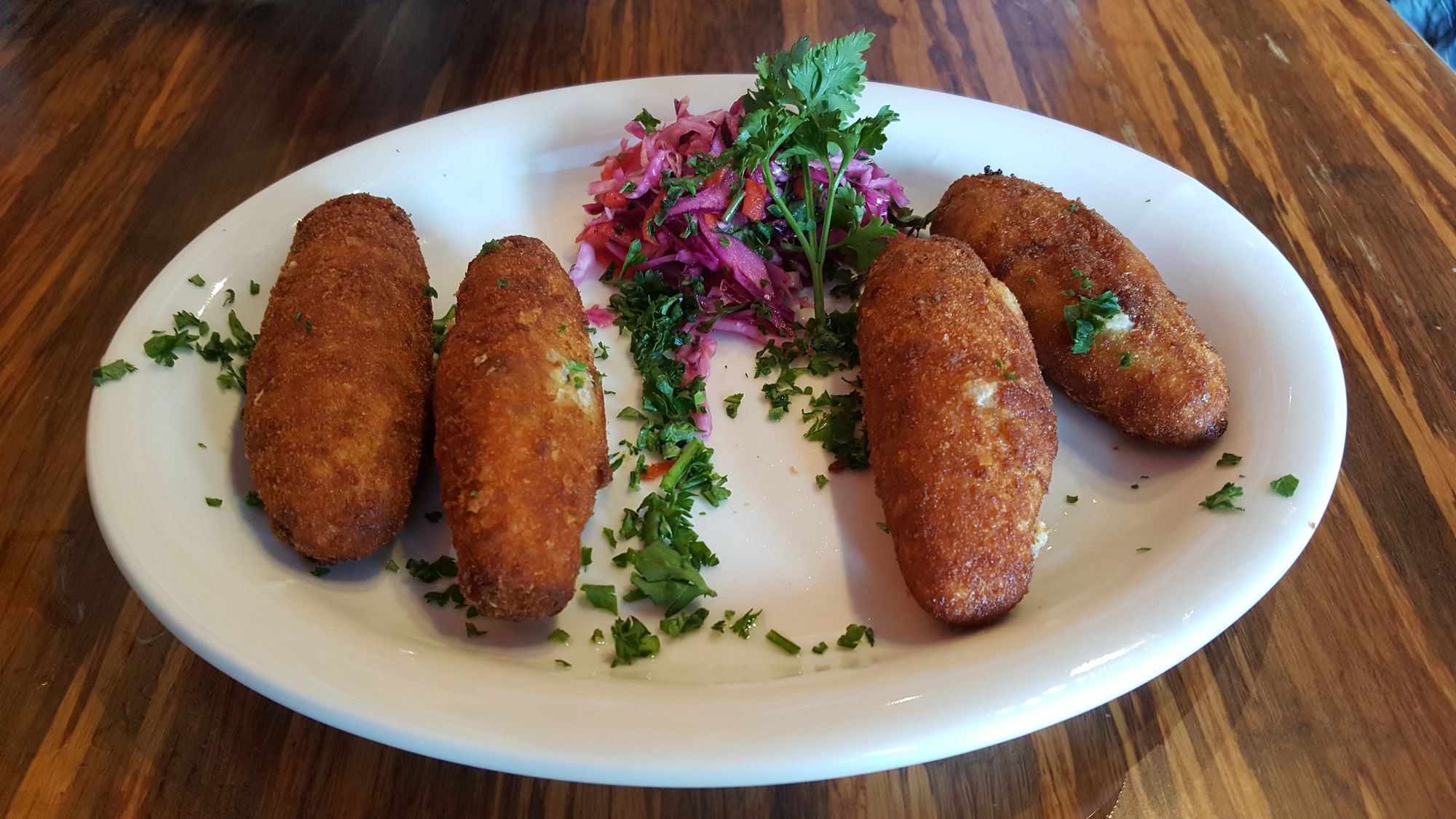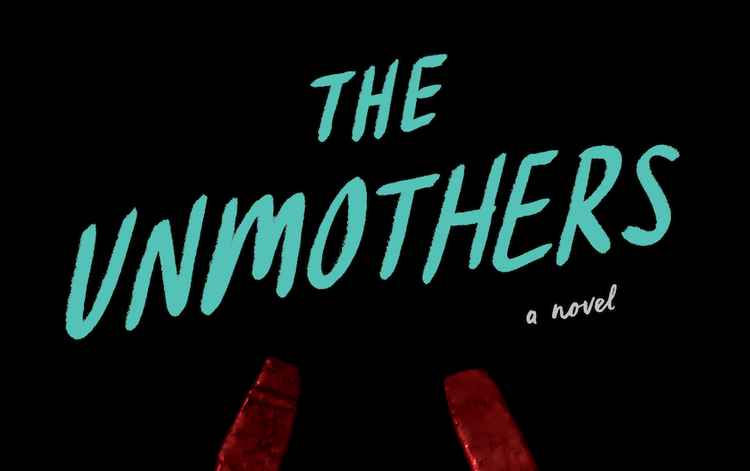A Day to Remember | Alcapurrias

Alyssa Gonzalez is a biology Ph.D., public speaker, and writer. She is primarily a personal essay, technical, and speculative-fiction writer and this is her first venture into recipe writing. She writes at The Perfumed Void (the-orbit.net/alyssa), on the subjects of biology, history, sociology, and her experiences as an autistic ex-Catholic Hispanic transgender immigrant to Canada. She lives in Ottawa, Canada with a menagerie of pets.
My grandmother used to make alcapurrias. Well, that’s not entirely accurate: we all did. Alcapurria day was a family affair and one of the few things that could bring us all to the same table with a shared goal. Mothers, grandmothers, and children alike had roles to play.
Alcapurrias required someone to cut and peel the guineos (underripe bananas) and yautías (more on them later), someone to grate these starches into dough, someone to prepare the beef filling, someone to shape the hand-pie-like alcapurrias out of the lot, and someone to fry them. We did not use any machines; our tools were knives and hand graters. Our sweat and occasionally blood went into those alcapurrias—it was dreadfully easy to slip and grate oneself into the dough—and the exertion made them all the more delectable. It was a rustic experience wonderfully out of place in our big-city home. This exertion kept us connected to our agricultural history. It was an occasional treat, often around holidays, and an occasion in itself.
There will never be another alcapurria day quite like those.
My grandmother is dead. Among the voids her passing tore into all our lives was that she would never again be wrist-deep in grated yautía with us, guiding us through the recipe, providing both muscle and wisdom. All future occasions will be different because this glorious woman is not in them anymore. I have also moved far away from the family home, by choice and necessity. Their alcapurria days are even more different because I too am no longer in them; my alcapurria days must be had by myself.
This dish is not meant to be done alone. Everything about it demands a team, from the sheer scale of its effort to how long it takes to eat the results. But, almost unique among items like it, I have found no ready-made source for something similar where I am. When I decided to have alcapurrias again, I would have to make a day of it. Or rather, lots of days. And those days started with figuring out how to get yautía here in Canada.
Yautía is the traditional Puerto Rican name of the corm (semi-underground storage stem) of Xanthosoma sagittifolium, which Cubans call malanga. This plant is in the arum family, which is better known for jack-in-the-pulpit, pothos, calla lilies, and taro root. Native to lowland regions of South America, X. sagittifolium has been an indigenous food plant for thousands of years. Following humans in their migrations, it spread to Central America and to the Caribbean islands as a staple crop. In Miami, where I grew up, it was in every grocery store, always called “malanga” thanks to the large Cuban population there that was the other half of my heritage. In Canada, the name was not nearly so cut and dried.
My searches for yautía and malanga always pointed me at several other plants and rarely at the correct one. Even now, searching the Cuban and Puerto Rican names alike can point a person in several directions (usually different ones for each name). Wikipedia flags this “malanga” as pertaining to Colocasia antiquorum, an East Asian arum otherwise known as the “eddo.” Google’s default search results can instead connect the name “malanga” to taro (Colocasia esculenta), the staple crop of the South Pacific, as a result of X. sagittifolium getting spread there and being confused for the original taro. Both taro and eddo are cousins of X. sagittifolium, but their flavors cannot replicate the classic alcapurria experience. Abortive tries with these proposed substitutes proved that neither was the malanga/yautía I sought. Meanwhile, tropical foliage enthusiasts know X. sagittifolium and a few of its cousins as the “elephant ear plant,” grown for its large, attractive leaves. I needed the real deal to make this memory come alive again. After many, many frustrating searches, I finally found real yautía, sold under the name “lila malanga” in one specialty grocery store in my Canadian home, after so many other vendors had only eddo and taro in stock. I knew it on sight: yautía is a long, thin, purple-brown root with a hairy, almost elephantine look, quite distinct from the much thicker taro and short, round eddo.
Even in a snowy place far from where yautía grows – where making sure that the bananas are not too ripe when purchased is sometimes tricky – I could make alcapurria day happen.
It was not really in the spirit of things to do it by myself, but that’s how it had to be. Graduate school pulled me away from Miami; the realities of being a transgender woman from a community not especially inclined to treat transgender women kindly kept me away. Election results in Florida since then have made the necessity of distance all the starker.
I did not have the space or tools to share the labor. My kitchen is far smaller than any of the ones in which I enjoyed alcapurria day in the past, and modern schedules meant that collecting friends for this unfamiliar task would be a forbidding prospect. If I wanted to make it happen, it would have to be on my own. Women like me do not get to have a proper all-hands alcapurria day.
Yet some memories demand to be remade. And I remade them.
It took all day. I bled into the bowl through my grater just as my grandmother and mother did. I relearned all the lessons that were in my grandmother’s muscle memory, about how to hold the grater and how fine the dough had to be. I spent the day in a haze of lovely, familiar smells that, until that day, I was not sure I would ever again encounter. I took breaks because I was one person trying to do the work of a half-dozen. Just the part at the end, nursing my deep fryer through one alcapurria at a time, took nearly two hours.
But I did it. I made it happen, and every smell and bite and injury and long, long cleanup afterward was worth it: To get to both smell my grandmother’s handiwork so far from home, and to know that I could keep it alive even after her passing. She was one of the few people in my family who accepted me early and enthusiastically, and achieving this communion with my memories of her was one of the most beautiful moments I could have hoped for. In the end, making do with a reality that isn’t good enough is one of our traditions, too.
So, alcapurrias. May they be as meaningful to you.
Alcapurrias, Alyssa Style

Making alcapurrias by oneself is an all-day affair. One should anticipate that this process takes about five hours, including a break after the arm workout of grating the dough components. With a stand mixer with a grater attachment or some other powered aid, or with one or more assistants, the time commitment is correspondingly reduced. I did mine by hand, partly from lack of other options, partly for the communion with my memories of grating malanga by hand. Prepared as written, this recipe produces 15-16 fritters in classic hand-pie size, one or two of which provides a filling meal.
Get the Recipe: PDF, Google Doc
Ed. Note - a typo in the recipe has been amended to reflect the correct amount of green bananas required for this recipe. Thanks to the eagle-eyed readers who caught it!
If you’d like to own the Personal Canons Cookbook ebook, which collects all these essays and recipes in easy-to-reference, clickable format—plus loads of bonus recipes from me!—join the Stone Soup Supper Club. The ebook is free for subscribers, who will get the download link in their inboxes in the first Supper Club email of 2024!
Remember: Care for yourself and the people around you. Believe that the world can be better than it is now. Never give up.
—Gailey






Member discussion